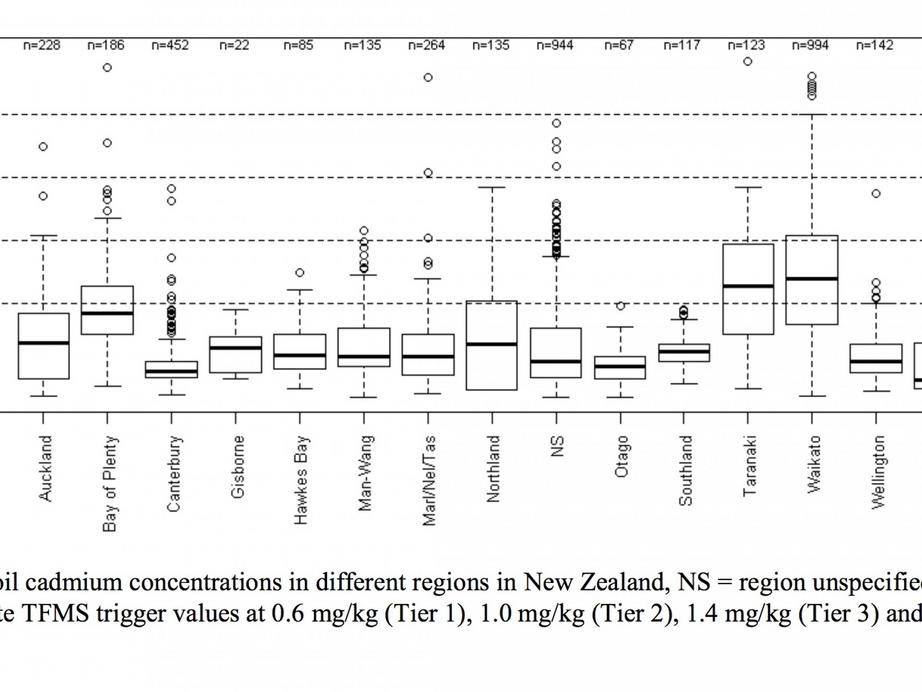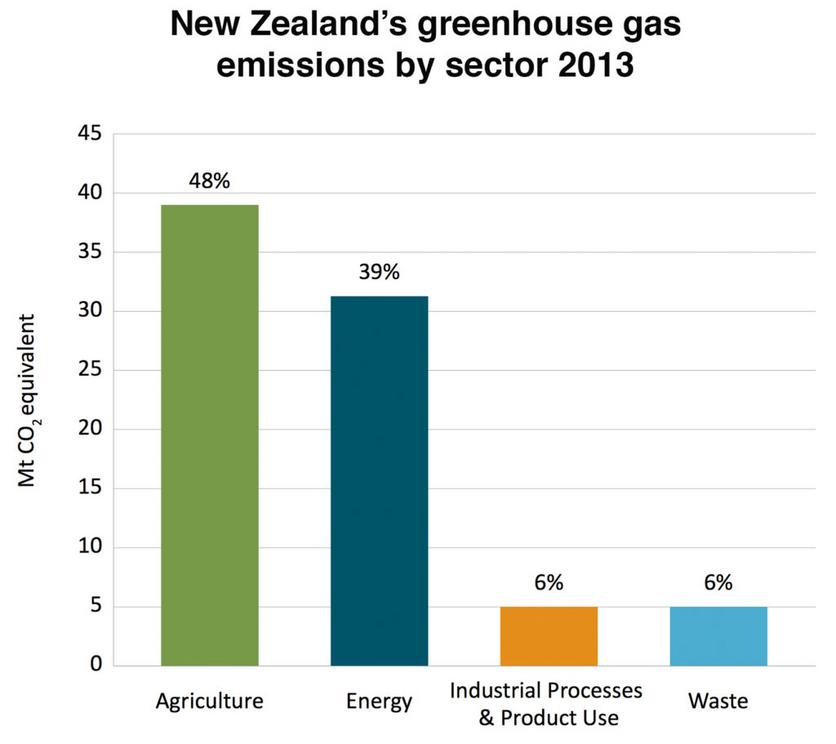The billion dollar solution to New Zealands environmental crisis
Facing some of the largest environmental issues in our country’s history, we need to look past the causes which have now truly been established and instead focus on a strong part of the solution; a billion dollar crop which has the potential to revolutionise agriculture in New Zealand.
With increasing media focus on environmental issues such as soil contamination, freshwater pollution, greenhouse gas emissions and agricultural land conversions in New Zealand’s sensitive eco-systems like the Mackenzie Basin, it is now commonly accepted that current farming practices need to change.
Evidence is mounting, with scientific report after report being released stating what many already know: the manner in which we are farming is degrading our environment. The clean up costs associated are now estimated in the billions of dollars, the brunt of which will be borne by New Zealand rate and taxpayers unless legislation is changed to make polluters pay.
Currently the industry wails that dairy farming is the economic backbone of New Zealand and it would be heresy to consider real change such as implementing stocking limits. However, with tourism overtaking dairy as our biggest export and the economic costs of cleaning up dairy’s pollution breaking even with the revenues generated, we clearly need a new approach.
Cannabis Sativa
Reefer Madness was part of a highly successful propaganda campaign with the purpose of misinforming the public about the dangers of ‘marijuana’, a slang term created for cannabis made famous by the first director of the Federal Bureau of Narcotics, Harry Anslinger. In his 1930’s campaign against the drug, he falsely claimed accounts of marijuana-crazed Negro and Hispanic men raping white women. The introduction of the Marihuana Tax Act of 1937 was the first step to prohibiting not only cannabis but also hemp, which for good reasons threatened large American corporate interests.
Industrial hemp and cannabis, both of the cannabis sativa species, form a powerhouse industry unlike any other which have the incredible potential to revolutionise how we farm our land.
Industrial hemp, the male cannabis plant has been cultivated for its strong fibres for over 10,000 years and produces high levels of cannabidiol (CBD) but very low levels of tetrahydrocannabinol (THC). Because of this, there are no psychoactive effects when smoked, but the plant has a multitude of other benefits such as in the production of paper, textiles, clothing, building materials, biodegradable plastics, paint, insulation, biofuel, food, medicine and animal feed.
Cannabis, the female plant produces high levels of THC which produces psychoactive effects when smoked or consumed, but also has lower levels of CBD compared to hemp. With 8 states in the US now having access to fully legal recreational cannabis, sales are expected to top $20 billion by 2021.
Both members of the Cannabis sativa species are fast growing with each crop taking around three to four months, requires little to no pesticides or herbicides, cleans soils from pollutants and is proving a valuable crop to grow for its many uses. New Zealand has an excellent climate for growing hemp and cannabis with fertile soils, high annual sunshine hours and good average rainfall.
Cadmium
Due to industrial processes such as mining and smelting as well as high levels of super-phosphates and other fertiliser use required to meet the demand placed by intensive farming, soils around the country have been contaminated by cadmium.

Source: Landcare Research Status of Cadmium in NZ soils 2014
Cadmium is a highly toxic heavy metal linked to cancer and cardiovascular problems which has an extremely long half life in mammalian systems, estimated around 15 years in human kidneys. As a general rule, exceeding the level prescribed by New Zealand food standards are relatively unlikely when cadmium in the soil is less than about 0.7 mg/kg. Figure 2 however reveals regions such as Taranaki and Waikato already have levels beyond 0.7 mg/kg and could have exceedance rates as high as 5% as found in Australia.
Massey University scientist Dr Mike Joy says it is not known how much of our agricultural land has been contaminated by cadmium, but that we need to act.
“The only real published work we can use is the Waikato Regional Council study where 160,000 hectares back in 2004 exceeded that level, and modelling showed it would be over half the region by 2030.”
“For me the biggest issue is not being able to grow food from that land in the future; that we’ve put our food security at risk by contaminating our soils with this carcinogenic heavy metal.”
Hemp has the ability to clean polluted soils through a process called phytoremediation. This process is effective at absorbing cadmium, cleansing the soil without causing any damage to the health of the plant. The wonder of hemp means the crops used to remediate contaminated soils can still be used for industrial purposes such as bio-fuels or as a building material.
Greenhouse Gas Emissions
In New Zealand, agriculture remains our largest greenhouse gas emitter contributing half of the emissions which we pay $1.4 billion every year in carbon credits to offset. Although agriculture emits such a large portion of our emissions, it remains excluded the Emissions Trading Scheme (ETS), mainly due to the political implications from internalising this cost for the rural voting base.

Source: Statistics NZ (2013)
Besides the obvious inclusion of agriculture to the ETS, it is cheaper for New Zealand to reduce emissions at home rather than purchase credits abroad. One part of the solution is the transition of land use away from intensive farming, in particular dairy, and towards hemp and cannabis.
Methane emissions from mainly sheep and cattle currently make up one third of New Zealand’s total emissions. Meanwhile, each hectare of hemp cultivated is estimated to absorb 8.9 to 13.4 tonnes of CO2 per year (Pinus Radiata absorbs around 15-26 tonnes per ha per year).
Changing land use away from stock and towards carbon sinks such as hemp is one of the fastest ways to achieve the commitments to reduce emissions to 30 per cent below 2005 levels by 2030 set at the COP21 Paris Agreement. In other words this is an already weak target of 11 per cent below 1990 levels and for New Zealand to live up to its ‘clean, green’ marketing, we need to set much higher commitments.
Water and fertiliser
Hemp and cannabis do have a high water requirement which would keep existing irrigators in action, and both require moderate to high fertiliser use; inputs which will need to be managed sustainably given current nitrogen loads in waterways. What this model removes however is the cow, which is a large factor in nitrates leaching through soils.
A dairy cow typically excretes 25 litres of urine a day, with one cow’s urine patch delivering 1000kg of nitrogen to the hectare. This is too concentrated for the soil to handle and therefore leaches through to groundwater. With 60% of monitored waterways now unswimmable due to pollution, we need to consider which future land use practices will be sustainable long term.
Economic Benefits
Historically low dairy payouts and having the effects of environmental degradation at the forefront of most farmer’s minds, the legalisation of hemp and cannabis would give those who historically relied on dairy the ability to even partly transition towards a high value crop as demand grows not only in New Zealand, but around the world.
Hemp seeds are soon to be legalised as a food by Food Standards Australia and New Zealand (FSANZ), opening the door to a new consumer market for local hemp protein, hemp seed oil and hemp milk, all of which are already very popular among the health conscious, while products could also be exported worldwide.
With increased access to medicinal cannabis products, including CBD oil which will soon be available by doctor prescription, demand for legitimate farming operations growing hemp and cannabis for medicine are increasing.
Crowned the ‘New Billion Dollar Crop’ by Popular Mechanics magazine in the 1930’s, hemp and cannabis in 2017 has the potential to allow farmers to transition away from the polluting intensive farming model towards a crop which is profitable, helps clean our waterways and soils, while also assisting in the reduction of existing atmospheric emissions.
To revolutionise the agriculture industry in New Zealand and clean up the pollution, we must allow farmers greater access to this wonder crop. Not only will legislative change move New Zealand towards a much greener future, it will also help save our economy.
For the rest of this article please go to source link below.

